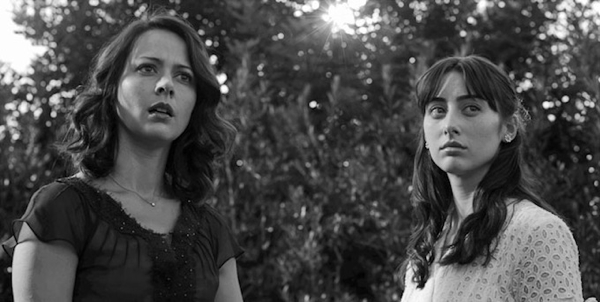Movie review by Greg Carlson
Considering the many cinematic adaptations of the plays of William Shakespeare, it is surprising that Joss Whedon’s film of “Much Ado About Nothing” is only the second theatrically released, English language, synchronous sound version of that popular text produced as a film (and not a filmed stage production). The previous iteration, Kenneth Branagh’s charming, funny, and fearlessly cast movie of 1993 might have deterred most others – especially Yankees – but Whedon’s effort, shot in less than two weeks during a contractually required break from the massive, nearly all-consuming post-production tasks on “The Avengers,” distinguishes itself in all sorts of ways, some effectual, some not so much.
Peopled with Whedon’s favorite actors from many of his previous projects (including “Angel,” “Dollhouse,” “Buffy the Vampire Slayer,” “Firefly,” “The Avengers,” and “The Cabin in the Woods”), “Much Ado” was also shot in and around the director’s Santa Monica home, making efficient use of the dwelling’s many rooms and outdoor spaces for all manner of drinking and eavesdropping. Striving for, if never quite fully achieving, the kind of rapid-fire banter associated with the great screwball comedies of the 1930s, “Much Ado” will most likely be sought out by Whedon’s fans and Shakespeare-on-film completists.
Jay Hunter’s black and white photography accentuates the sharp fashions – suits and ties for the men, dresses for the women – but also reminds the viewer of several of the show’s potentially outmoded and antique social customs, most unmistakably the significance of Hero’s virginity as a prerequisite for marriage. While it certainly makes sense that the insecure, unworthy Claudio would be upset when confronted with the idea that the woman he desires has been intimate with others, a great deal of the text’s prose alludes to an expectation of chastity that proves as tough a sell in the modern setting as the idea that the well-dressed fellows have just returned from battle.
The trailer for “Much Ado” tantalizingly promised a carnival of erotic gamesmanship and lusty, masked ball flirtations, but the action is buttoned-up with the notable exceptions of a post-coital disappearing act prologue that confirms Benedick and Beatrice’s intimacy and a rendezvous between Don John and a gender-swapped Conrade that breathes some life into the antagonists’ camp. Given the large number of male roles in the play, Whedon might have re-imagined even more of the boys as girls, since outside of Beatrice and Hero, the latter gender is represented mainly by servants. Fortunately, Amy Acker’s Beatrice is this production’s most luminous and memorable character.
Curiously, Whedon retains Claudio’s racist declaration that he is prepared to marry the veiled “niece” of Leonato even if she is revealed as “an Ethiope,” and while the filmmaker’s intention is to comment on the ugly sentiment rather than condone it, the moment serves as a weird reminder of the cohort’s white, privileged homogeneity and cements Claudio as more than just a fool and a jerk, adding prejudiced bigot to his list of epithets. As noted by Camille Martinez, “Shakespeare’s dramatis personae betray a Eurocentric vision that 21st century audiences may find trouble with.” In 1993, Branagh’s inclusion of Denzel Washington as Don Pedro served as an arguably token example of so-called “colorblind” casting, but given the prince’s rank, authority, and heart, Branagh was making a deliberate statement.
